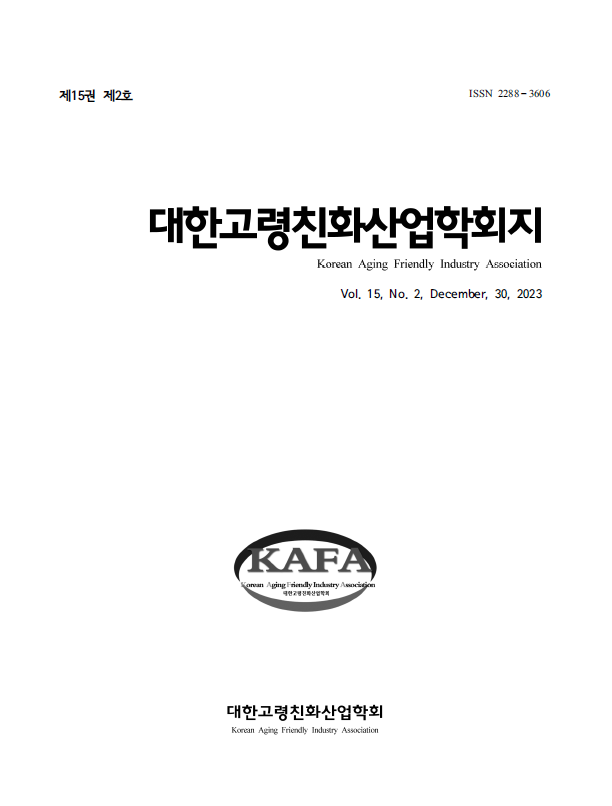고령 운전자의 안전운전행동과 인지 능력 간의 상관 연구: 시공간적 작업기억 능력과 운동 제어 능력을 중심으로
A Correlation Study on Safe Driving Behavior and Cognitive Abilities of Elder Drivers: Focusing on Visuo-spatial Working Memory and Motor Control Abilities
- 대한고령친화산업학회
- 대한고령친화산업학회지
- 제15권 제2호
-
2023.121 - 14 (14 pages)
- 176

연구목적 본 연구의 목적은 고령 운전자의 안전한 운전을 위해 필요한 시공간적 작업기억 능력 및 운동 제어능력에 대한 주관적 평가와 객관적 평가 사이의 상관관계를 밝히는 것이다. 연구방법 본 연구는 만 60세 이상의 고령 운전자를 대상으로 한국형 자기보고식 노인 안전운전행동 측정도구(Korean Safe Driving Behavior Measure, K-SDBM), 시공간폭 검사(Spatial Span Test, SST) 및 손가락 두드리기 검사(Finger Tapping Test, FTT)를 실시하고, 피어슨 상관관계 분석을 실시하였다. 연구결과 연구결과에서는 시공간 작업기억의 폭이 한국형 자기보고식 노인 안전운전행동 측정도구의 세부 항목 중 ‘집중이 요구되는 운전 상황’ 요인의 점수와 부적 상관관계를 보였다. 한편, 손가락 두드리기 검사는 오른손 두드리기 총횟수와 한국형 자기보고식 노인 안전운전행동 측정도구의 세부 항목 중, ‘일반적 운전 기술’과 정적 상관관계를 보였다. 이는 고령 운전자가 생각하는 주관적 인지 능력과 객관적인 인지 능력의 차이가 있음을 보여준다. 결론 본 연구는 고령 운전자의 안전 운전 가능 여부 판단 시 주관적 운전행동 측정 뿐만 아니라 객관적 인지 검사도 함께 병행되어야 함을 시사한다.
Objective : This study aimed to investigate the correlation between subjective and objective evaluations of visuo-spatial working memory and motor control abilities for safe driving among elderly drivers. Methods : This study evaluated safe driving behavior among Korean elderly drivers aged 60 and above using the Korean safe driving behavior measure (K-SDBM), Spatial Span Test(SST), and Finger Tapping Test(FTT), and conducted a pearson correlation analysis. Results : The results showed that visuo-spatial working memory span in spatial span test was negatively correlated with the score of the ‘driving situations that require concentration’ factor in the K-SDBM. In addition, the finger tapping test showed a positive correlation between the total number of right hand taps and the ‘general driving skills’ factor in the K-SDBM. This indicates a discrepancy between the subjective cognitive abilities perceived by elder drivers and their objective cognitive abilities. Conclusion : This study suggests that both subjective driving behavior measures and objective cognitive tests should be used together to assess the safety of elder drivers.
Ⅰ. 서 론
Ⅱ. 연구방법
Ⅲ. 연구결과
Ⅳ. 고 찰
Ⅴ. 결 론
(0)
(0)